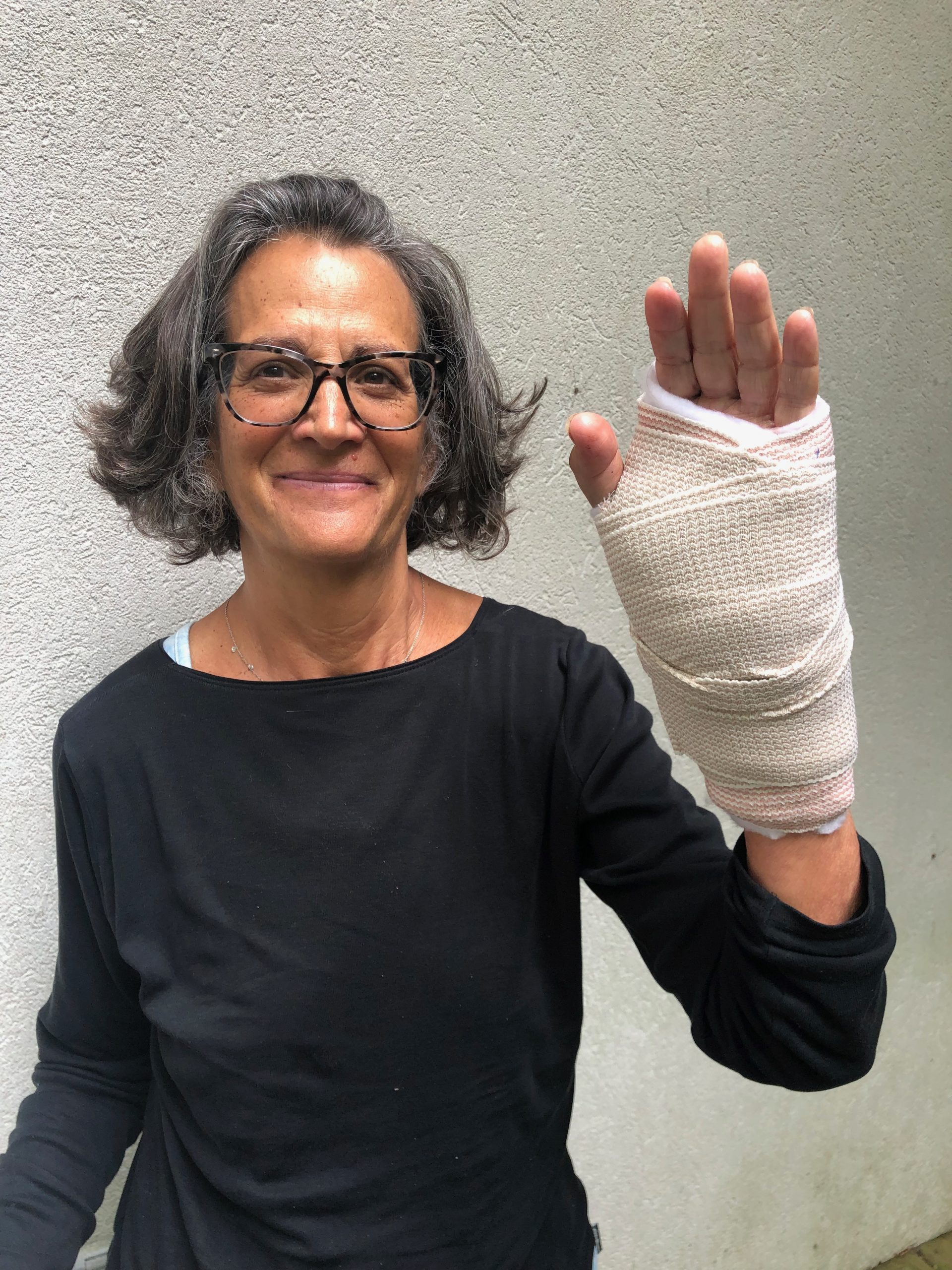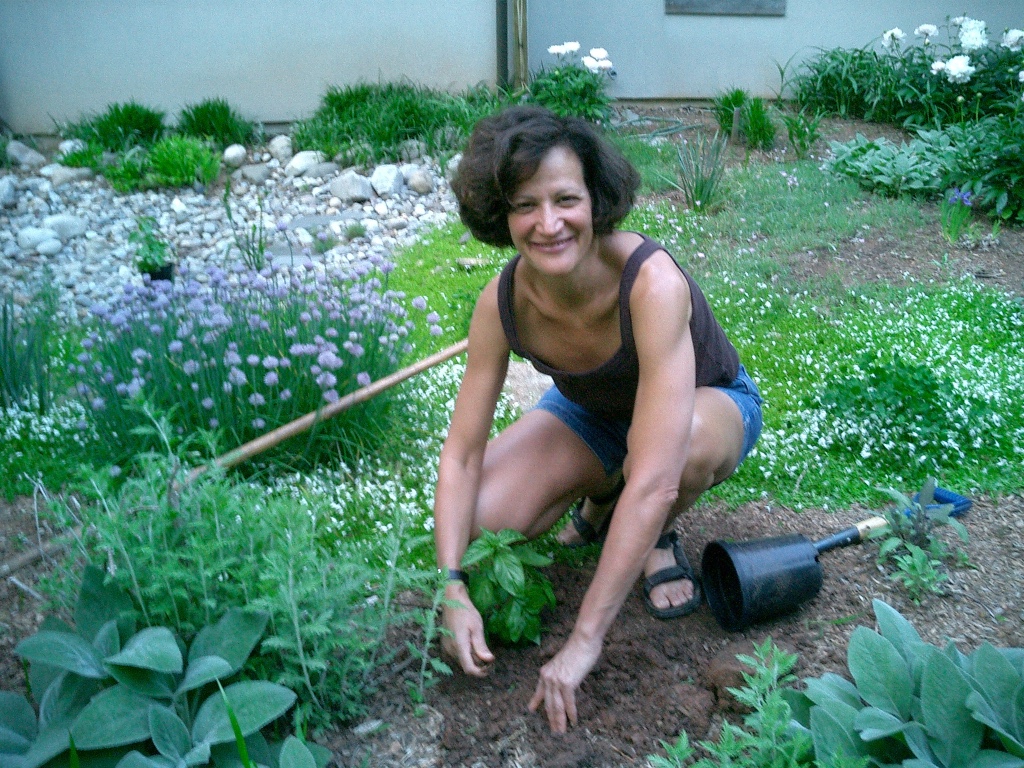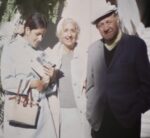With my grandparents in 1968
My grandfather was a professional boxer and a Featherweight Champion in Washington D.C. in the 1920’s when boxing was illegal.
“BOXING IN WASHINGTON WAS ILLEGAL UNTIL THE LATE 1930s, but it was conducted nevertheless on a floating crap-game basis, with arenas popping up here and there” writes Shirley Povich the famous sports writer for The Washington Post at the time. It is in this backdrop of thugs and gambling and organized crime that my grandmother married my grandfather in 1926, making him promise to leave the ring. My mother was born two years later.
My grandparents were Jewish, and Jews at that time experienced a lot of discrimination. This was true in boxing as in all sports, so my grandfather changed his name from Isadore Goldstein to Goldie Ahearn. This new persona identified him as Irish — a more acceptable minority in sports. As the story goes, one of the first times he stepped into a ring paired with another ‘Irishman’, it did not take long for them to discover they were both Jewish and had both garnered Irish names.
None-the-less “Goldie Ahearn” stuck, Goldie returned to the ring and became famous and his wife Helene, my beloved grandmother, walked down Connecticut Avenue in Washington D.C. like she owned the place. They became a Washington power couple, and leveraged my grandfather’s fame into first a lucrative fight promotion business and then a celebrity restaurant, Goldie Ahearn’s Charcoal Pit.
Another quote by Shirley Povich follows my grandfather’s later career after his nose was smashed flat and he was hit in the head way too many times. “WHEN BOXING WAS LEGALIZED HERE, Washington became a prominent fight town. The champions came running toward the solid gates that promoters Joe Turner and Goldie Ahearn were generating. Sugar Ray Robinson fought here. So did Rocky Graziano and Henry Armstrong, each three times, and Floyd Patterson. Rocky Marciano and Joe Louis himself defended their world titles here. After his retirement from boxing, Ahearn operated a restaurant under his name on Connecticut Avenue, which became a popular downtown restaurant. Ahearn, a well-known malapropist, commissioned a huge mural depicting boxing scenes, which covered two walls. To a chap not yet his client, Ahearn said, “You ought to come up and see my muriel.”
What does this have to do with me? For openers I am also a (not so well known) malapropist. I cherish this connection with my grandfather and while I have not been quoted in a newspaper with my strange words that are close to but not the actual word I mean but have had plenty of good fun with the minor embarrassments. Secondly, I adored my grandfather and grandmother and they adored me. I was their first grandchild and they made me feel very special. I spent days and weeks at their apartment on Connecticut Avenue, the shimmer of the chandelier in the entryway, the octagonal tiles in the bathroom and the smell of the place is still with me today. And I spent even more time at Goldie Ahearn’s Charcoal Pit Restaurant. There was that mural on one prominent wall in the dark basement enclave. But what I remember more is the hundred or more black framed photos of my grandfather shaking hands with famous people, from underworld-type boxing characters to the President of the United States. The slogan under the logo for the Restaurant was ‘Where Champs Wine and Dine.’ It was confusing to be a little girl and to have access to a famous, fairly opulent restaurant where champs who made a living getting beaten up in sleazy venues were glorified. And all the money seemed to come from this dark, dangerous world where brutality and crime were central themes. It is well known that sports gambling has a stronghold in the crime world. As the innocent little princess granddaughter, my awareness was semi-conscious and indirect. At our house, I knew that my father had loosened a floor tile under the steps to the basement and underneath was a compartment containing bundles of cash. This seemed perfectly normal. One night, the cash was collected by strange men. I had gone to bed and in its place I received a $100.00 (think $1,000 in today’s money) bride doll with pearls around her neck. I entered the doll into contests of the time I can still see all the blue ribbons hanging off her dress appliquéd with pearls. I was most likely a proud beneficiary of some money-laundering scheme.
My grandparents fame continued and in my archives I find an article from The Washington Evening Star newspaper celebrating their 25th wedding anniversary. They mention grandchildren on the way. I was born that same year, 1953.
I have only one family photo that includes my extended family. Right in the middle of the group sits the famous boxing champion, Rocky Marciano, next to Goldie, as if a prize fighter in the middle of your family is the most normal thing in the world! Rocky Marciano was the world heavyweight championship from 1952 to 1956, the only undefeated heavyweight champion. He seems to be part of my family!
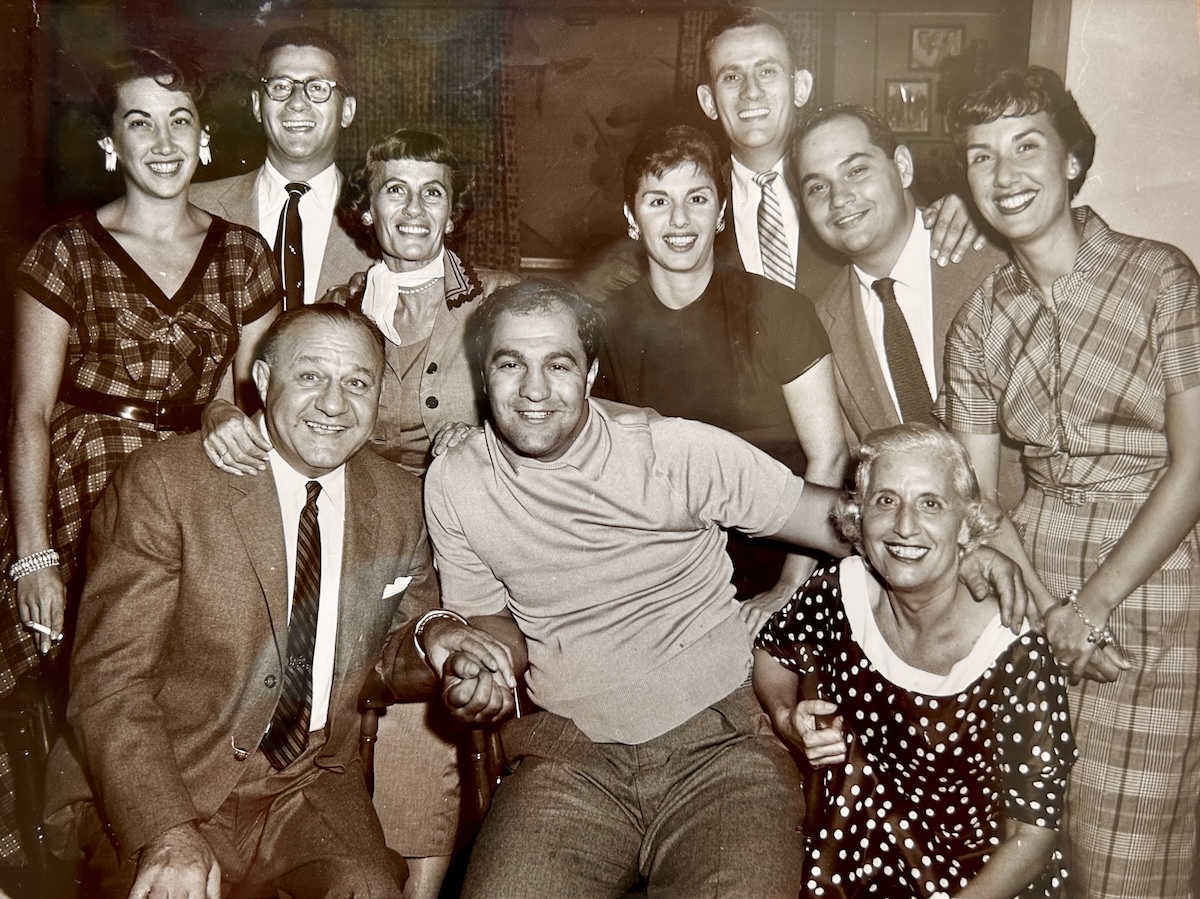
The restaurant where this picture was taken was dark, mysterious and wonderful to my childish self. It was here that I had my first Shirley Temple cocktail and a waitress named Bell taught me to knit. Every one of my birthdays was celebrated at the restaurant until it was sold when I was 12. In the photo at the top of the page I am 15 on a trip to Florida for the holidays right after my mother has died. I was so happy to rediscover this photo recently, scanning it from a set of old slides long in the attic.
In the world of attachment that I study and practice it is understood that a child will be ok if they have at least one person they can rely on in their lives. For me my grandparents were it. Under their gaze and in their world I felt the safest and most comforted. And yet I felt all this against a backdrop of something more dark and sinister. They taught me to be a sophisticated special little girl yet in the shady world that they so brightly occupied I also learned that white lies abound, nothing is quite is wonderful as it seems, and there can also be dangerous secrets.
I was left with a feeling of being somewhat entitled, but to what I was never sure. And also a feeling that everyone might get caught at any moment. In my childhood, my family had friends who went to jail. It was all pretty confusing.
Now as we have created abundance and beauty in our lives I am haunted by a feeling of “can you believe we created this? “As if it could go away at any moment, as if it is not quite real, as if it is the veneer of all that it seems but underneath — well, the child in me is afraid.
I often ask people I work with to pause to take in more of something they have glossed over. When I pause to try to take in more of my life I meet a very unsettled place in myself. The more my life comes together with ease and support the harder it is for me to settle. It is starting to make sense. My grandmother made meatloaf for our Sunday family dinners with ground filet mignon sourced from the restaurant. In the background she and my mother were having reoccurrences of breast cancer that were kept a secret.
I would naturally conclude; The better it gets, something must be terribly wrong.
All children sense things even when they don’t explicitly understand. I have paired goodness, abundance, prosperity and ease with danger and darkness, illness and death.
I knew I wanted to write about my grandfather but I did not know I would make this discovery. Now I can work on separating these coupled emotions that do not now need to go together. Just as I teach others to do.
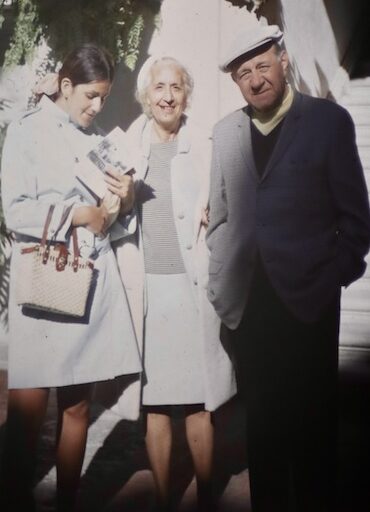
 I was watching the clouds this morning lying on a dock hearing the gentle waves wash over the rocks below. Occasionally, the dock would rock, creek or moan from the motion. The clouds were not moving as I watched them but if I looked away and then back they had moved apart and reconfigured. This happened over and over again. This apparent non-movement which is actually very dynamic.
I was watching the clouds this morning lying on a dock hearing the gentle waves wash over the rocks below. Occasionally, the dock would rock, creek or moan from the motion. The clouds were not moving as I watched them but if I looked away and then back they had moved apart and reconfigured. This happened over and over again. This apparent non-movement which is actually very dynamic.
